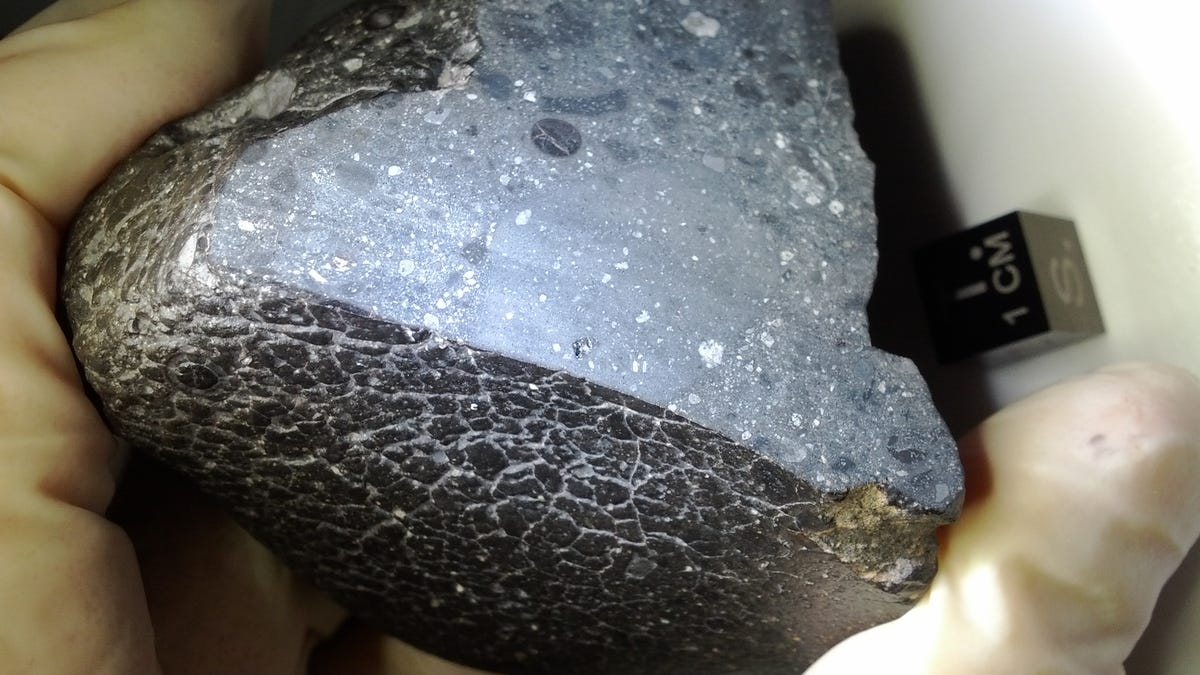Mars meteorite 'Black Beauty' hints at red planet's past habitability
A "one-off gift from the red planet" suggests Mars was bombarded by massive impacts in its deep past.
Mars is one enigmatic planet, especially when it comes to figuring out if life ever existed there. A new study of a rare Martian meteorite that landed on Earth suggests scientists might want to revise the timeline for when the red planet could have been suitable for life.
"Black Beauty" is a remarkable meteorite found in the Saharan Desert in 2011. Its official name is Northwest Africa (NWA) 7034, and it was first described in a 2013 study that dated it to about 2.1 billion years ago. It earned its nickname from its dark appearance. The little piece of Mars surface is largely made up of basalt and contains rock fragments and minerals, including some very old grains of the mineral zircon.
A research team led by Curtin University Ph.D. candidate Morgan Cox investigated zircon grains from Black Beauty. A study published in the journal Science Advances on Wednesday focuses in on a grain of zircon that shows the kind of shock damage that typically originates from large meteorite impacts, violent smashes on the scale of what killed off the dinosaurs on Earth.
"This grain is truly a one-off gift from the red planet. High-pressure shock deformation has not previously been found in any minerals from Black Beauty," Cox said in a Curtin statement. "This discovery of shock damage in a 4.45 billion-year-old Martian zircon provides new evidence of dynamic processes that affected the surface of early Mars."
The zircon is helping scientists sleuth out the timeline for potential habitability of Mars. "Prior studies of zircon in Martian meteorites proposed that conditions suitable for life may have existed by 4.2 billion years ago based on the absence of definitive shock damage," said study co-author Aaron Cavosie. The Black Beauty zircon appears to show Mars was getting pretty well bashed up around this time.
We know what large-scale impacts did to Earth (sorry, dinosaurs), and similar events could have taken a toll on any developing life on Mars. Cavosie said the "habitability window" for Mars might be later than thought, perhaps putting it at 3.7 billion to 3.9 billion years ago. This meshes with a time period when the planet likely had liquid water on the surface. Water is an ingredient vital for life on Earth and therefore of great interest on other worlds.
One tiny little piece of a Mars meteorite is giving researchers a lot of new information to consider when it comes to the history of Mars. We may eventually have even more data to work with if NASA is able to retrieve surface samples collected by the Perseverance rover and bring them back to Earth for study.
Did Mars ever host microbial life? We might not know exactly where to look, but perhaps we know a little more about when to look.


